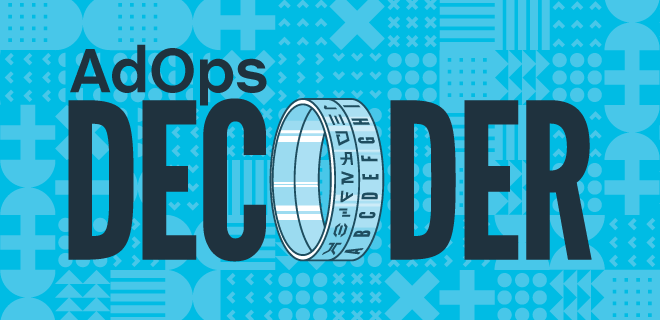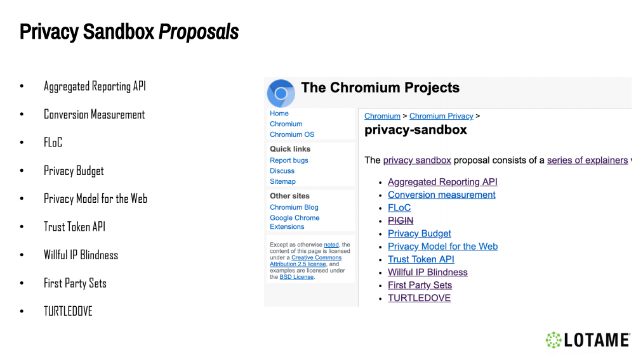
Now that the proverbial dust has finally settled and everyone has appropriately cycled through the five stages of grief—denial, anger, depression, bargaining and acceptance—it’s time to talk real talk about Google’s plans for advertising tracking and measurement in Chrome post-third-party tracking cookie.
But first I’d like to alleviate your fears. This is really not the end of advertising. As we know it, yes, but the end—certainly not.
The industry’s reliance on the tool has greatly outlived its days. AdMonsters Editorial Director Gavin Dunaway recently detailed the troubles that finally caught up with the cookie to emphasize this fact.
At a recent AdMonsters PubForum Joetta Gobell, VP, Research & Insights, Dotdash, reminded publishers that “Cookies are just a tool,” and “We can’t let tools take priority over goals.”
And at the same event, Keynote Amanda Martin, VP of Enterprise Partnerships, Goodway Group, stressed that a cookieless future was a perfect opportunity for publishers to lead the way and get better at organizing their first-party data.
In the new world, we’ve been told that identity resolution will help the industry achieve its goals. Or perhaps that even Unified IDs, with email hashing as the road that leads you there. There’s also been talk about semantic contextual targeting as an option, along with many others. All worthy solutions for sure, but they all beg the question, “What will measurement look like?”
What Will Google Do?
Of course Google won’t leave everyone hanging. They have a plan. And just in case you haven’t heard, it’s called the Privacy Sandbox—a proposal for a series of browser APIs intended to secure users’ privacy while also enabling advertising tracking and measurement.
Back in August, Google first outlined the potential use cases for the Privacy Sandbox tools including ad selection, conversion measurement and fraud prevention.
- Aggregated Reporting API – intended to measure ad performance with advanced features like frequency capping
- Conversion Measurement – would enable ad tech vendors to measure and report on advertising conversions and performance based on clicks
- FloC – creates segments of users based on browsing behaviors
- PIGIN – tracks users interests and combines them into interest groups (is being replaced with TURTLEDOVE)
- Privacy Budget – would limit the amount of information a website can access about an individual (this might also control the signals that a site has access to)
- Privacy Model for the Web – would allow some third parties to access a first-party identity
- Trust Token API – would aid in detecting and preventing ad fraud by separating users into Trusted and Untrusted groups
- Willful IP Blindness – would provide a mechanism for HTTP applications to blind themselves to IP address and other identifying network information
- First Party Sets – would allow publishers with multiple domains to declare themselves as a single first-party
- TURTLEDOVE – Two Uncorrelated Requests, Then Locally-Executed Decision On Victory (TURTLE-DOV) is intended to move ad auction logic from remote servers the local browser so that the browser stores user ’s interests and serves ads based on those interests solely
While it’s currently unclear how all of this will work, the Privacy Sandbox is meant to enable buyers and sellers—and their intermediaries—to load data in and then pull out aggregate results.
With sunsetting the third-party tracking cookie, as well as making updates to the default state of SameSite cookies, Google’s overall intent is to provide users with greater privacy control by storing all of a user’s data at the browser level. The goal is also to ensure that programmatic can continue to flourish.
But a large concern across the industry is whether the walled garden will become even more powerful in its advertising market share dominance, requiring everyone to load all of their data related to their campaigns into the sandbox. Some also worry that ultimate survival on the new frontier will mean relying on Google’s first-party logged in data across the web as a means of reaching scale, without any real access to audience data.
In a recent webinar, Adam Solomon, CMO, Lotame did his best to qualm everyone’s fears, stating that the Privacy Sandbox Proposals are an open standard, which means everyone in the industry can have a say.
Over at Lotame, you’ll find a set of useful resources, including a Fact Check Briefing Webinar, invitation to a Linkedin Group and an infographic, to further guide your understanding of Google’s Privacy Sandbox.
